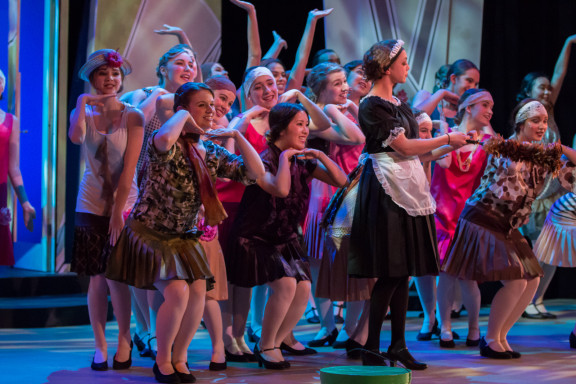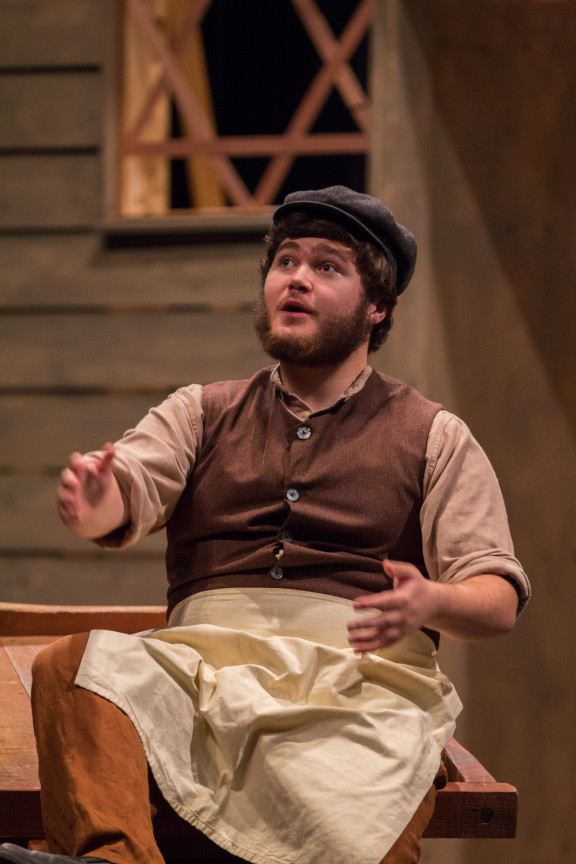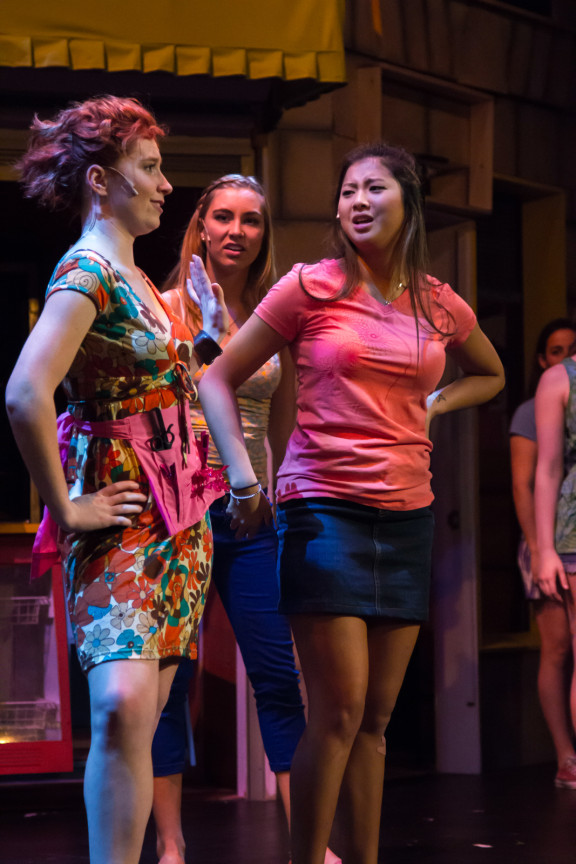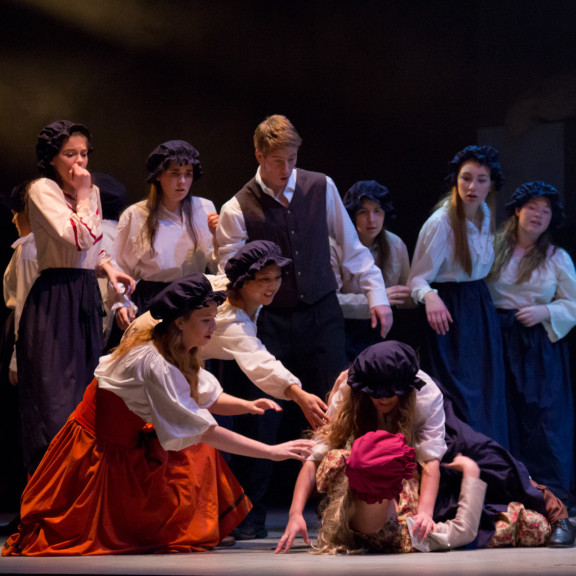50p
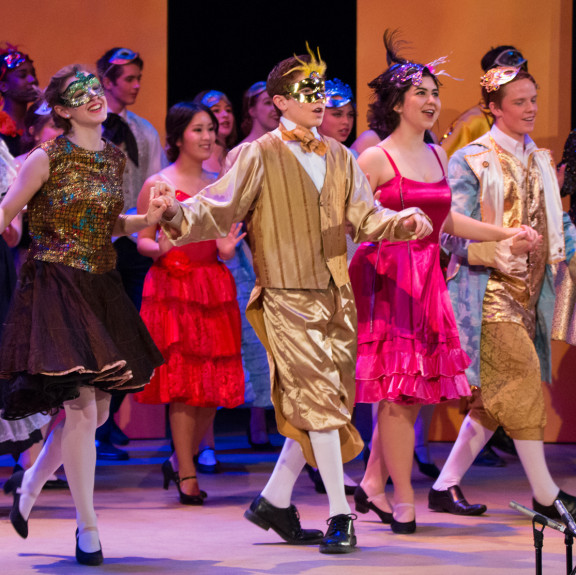
Front of House
As you will soon learn, the ineffable Mr. Tony Crossley was House Manager for the Brentwood Musical from 1986 until 2014. Below are his tales from the shadows.
In 1986, I received a letter from Gil Bunch, the colossal presence and dynamic force behind the Brentwood stage. The letter gave details of organisation and expectations regarding my upcoming role as House Manager for The Boyfriend, that year’s annual musical theatre production. I was very surprised to receive the letter, given that I had neither applied nor volunteered for the post, but of course a request from Gil was the Brentwood equivalent of a summons from Olympus and thus the stage was set – so to speak – for an extended (twenty-eight yearly productions) run as the greeter, the PR guy, the man in the monkey suit standing by the door.
The House Manager has many tasks: recruiting and organising help for both inside and outside the theatre, ensuring a smooth transition for the theatre patrons from the comfort of their car seats to the comfort of their theatre seats, and coordinating events so that – with cooperation from backstage – he can start the show on time.
The early years were dominated by the unique problems of running a complex event in the antiquated Brentwood auditorium/dining room building. The quality of entertainment provided in that aged venue was truly remarkable, and a tribute to the dedication and enthusiasm of the production team and the students who signed up for six months of hard slog culminating in one week of production. The stellar productions won a regular clientele of musical devotees who appeared every year clutching pillows and cushions to alleviate the physical discomfort of the infamous green chairs. In the early days of festival seating those-in-the-know would rush downstairs as soon as the doors were open ready to lay a wide variety of paraphernalia over seats to reserve for family, friends, and Uncle Tom Cobley who were all due to arrive just before show time. Ten minutes after the doors opened the theatre resembled a flea market with assorted goods scattered throughout.
Gil's original instructions were, with one eye obviously on the balance sheet, to pack as many chairs as possible into the available space. Inevitably, the heat generated by the crush of humanity became unbearable, thus leading to numerous disputes (all conducted, of course, in sotto voce) between those in the centre agitating for windows to be open and those on the periphery objecting to the frigid downdraft. The performers in “Too Darn Hot” (Oklahoma!, 1996) were surprised to see most of the audience nodding in agreement. On a number of occasions during the intermission, the impossible job of the House Manager was to pacify both the sweltering audience and the musicians complaining that the cold air drafts were playing havoc with the tuning of their instruments.
In the old Auditorium, each House took turns providing volunteer assistants: ushers, car parking attendants, ticket collectors, box office receptionists and the like. Exempt from this rota were the young women of Alex House who maintained a long tradition of serving tea (for those seated near the windows) and cool refreshments (for those not seated next to the windows) upstairs in the dining room during the intermission. Their immaculate Number 1 uniforms and welcoming smiles were the perfect introduction to an enjoyable and highly sociable 20 minutes of Brentwood discourse.
Communication between the House Manager and Stage Manager in the pre-electronic age consisted of volunteer runners who were dispatched into the darkness with vital and urgent instructions. All movement between the front of House and the stage was via the great outdoors. Members of the cast, too, moved from the old classroom block to the rear stage door via the outside roadway, battling the elements and navigating the gloom. It was not unusual to observe cast members arrive on stage in a sunny tropical scene with damp clothing and windswept hair. Natural hazards notwithstanding, the show usually started promptly on time.
The House Manager must be adaptable in dealing with unforeseen situations. For the South Pacific production (1998), set designer Geri Leigh excelled herself, installing a multitude of props that, crammed into the shoebox-sized stage, created a visual spectacle that deservedly generated applause as the opening curtain revealed the splendours of the South Seas. To complement the inside decor, Gerri also provided garden beacons that were installed on either side of the pathway leading to the theatre entrance. The effect of the flames burning brightly in the gathering dusk provided a magical atmosphere as patrons strolled along the fiery causeway on opening night. Once the show was underway, I would pop outside to extinguish the flames and collect the beacons for the next night. On one particular evening, however, a lively wind blew in, setting most of the wicker bodies of the beacons on fire and thus, while the audience enjoyed the serenity of "Some Enchanted Evening", the House Manager was experiencing anything but, frantically dashing from beacon to beacon extinguishing the flames.
On another occasion, the conducting skills of maestro Robert Cooper appeared extravagantly demonstrative with increasingly frantic upward gestures accompanied by expressions of alarm directed towards the rear of the auditorium. After a number of attempts to interpret his intentions (A call for a higher note on the Piccolo? An attempt to rouse the drummer from an impromptu nap? An uncomfortably tight fitting dinner jacket?) it transpired that a particularly noisy fan in the kitchen above was the source of severe irritation. Soon thereafter, determined to shut down the offending device, I faced with trepidation a most confusingly labelled breaker panel, fearing that an inopportune flick of the wrong switch would create mayhem below. Fortunately, I was rescued by the inimitable Clyde Ogilvie, the campus expert regarding the idiosyncrasies of all Brentwood’s buildings.
Another disadvantage of the old Auditorium was the location directly below the dining room where any footsteps on the hardwood floor upstairs resonated throughout the theatre below. Thus, while the four intrepid heroes from The Wizard of Oz (1997) were tiptoeing across the stage, their progress was echoed by the crashing progress above of apparently starving students looking for food in the kitchen. Dashing up and down the stairs chasing them away developed into a very efficient fitness regime for the House Manager.
Half-an-hour before curtain during the run of The Merry Widow (2001), the antiquated soundboard suddenly and catastrophically failed. This was indeed a complete disaster! An urgent phone call compelled Director Keith Digby to appear miraculously five minutes later, leaving a trail of tread marks the full length of Mill Bay Road. Even more miraculously, Keith’s rapid reprogramming of the entire show enabled the rising of the curtain at the appointed hour, and the widow soldiered on blissfully unaware that her evening was almost anything but merry.
The last night of the last show (My Fair Lady, 2003) in the old Auditorium was memorable in a number of ways. Late that afternoon a major snowstorm inconveniently wreaked havoc on local highways, thus trapping the Victoria Symphony members of the orchestra on the wrong side of the icily treacherous Malahat. As the snow gradually abated (while the audience waited patiently in the dining room, consuming litres of tea and also the refreshments intended for Intermission) the missing orchestra members gradually trickled in, dusted with snow, meriting appreciative bursts of applause from the captive audience. The show must, and did, eventually go on.
The excitement the following year for the first performance in the spectacular new T. Gil Bunch Theatre (Crazy For You, 2004) was shared by the whole school. The new facility and equipment – comfortable chairs, real dressing rooms, a real orchestra pit, state-of-the-art lighting and sound systems – created a buzz of expectation in the cast, crew, and audience alike. The area of the new stage was now greater than the area reserved for the entire audience in the old Auditorium. Swirling mists and other special effects, ascending chandeliers, and mammoth-sized sets added to the realisation that the Brentwood musical was now in the big leagues.
The current highly professional production team of Edna Widenmaier, Lorraine Blake, Phil Newns, and Don Armitage have ensured that the standard of performance in recent years has reached new heights. The key difference for me at this year’s entertaining and uplifting production of “The Boyfriend” was that a new guy was in the monkey suit, allowing me to sit back, relax, and thoroughly enjoy the show. To all those who ‘volunteered’ to help with the Brentwood Musical over the years: those who poured tea, endured frostbitten fingers while on parking duty, dished out programs, or collected the detritus after each performance – a sincere thanks for a job very well done. What a blast!
Tony Crossley
75p
